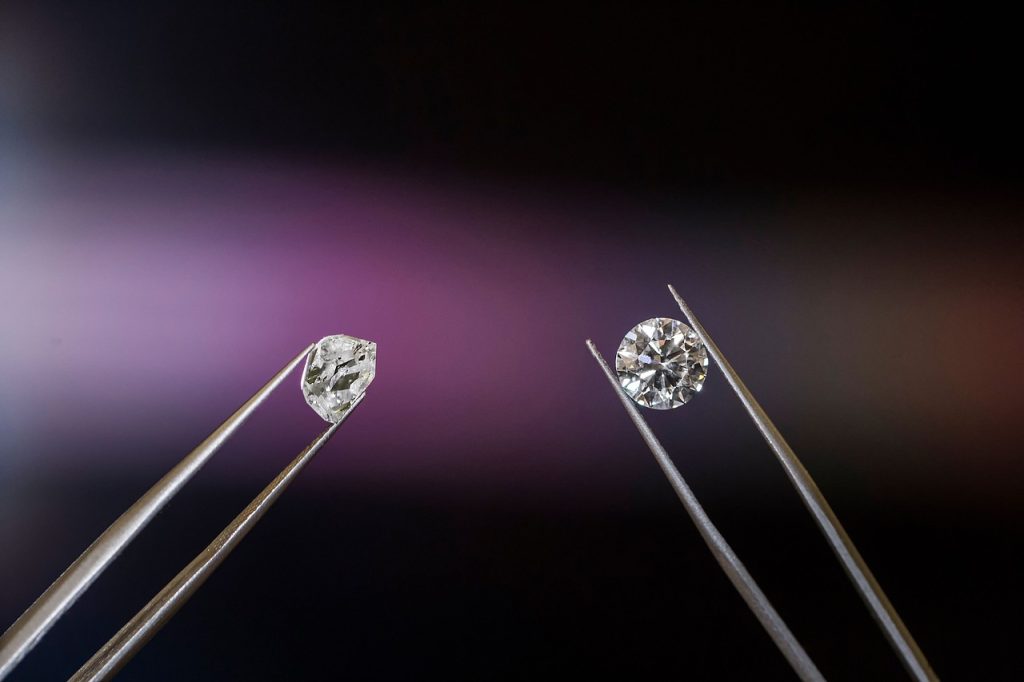Lab Diamonds: Dispelling Common Myths and Misconceptions

Lab Diamonds: Dispelling Common Myths and Misconceptions
Cultured diamonds have gained significant popularity in recent years as a more sustainable and ethically sourced alternative to mined ones. However, despite their increasing popularity, there are still several myths and misconceptions surrounding them.
This article will debunk these myths and give accurate information about lab grown diamonds, their composition, value, and environmental impact.
Table of Contents
Composition
Myth 1: Lab produced diamonds are fake.
Lab grown diamonds are not fake or synthetic; they are like real ones with the same chemical composition and physical properties as natural stones. The only difference is their origin. Lab-grown gemstones are created in a controlled environment replicating the natural conditions under which diamonds are formed. They are grown using a process called chemical vapour deposition (CVD) or high-pressure, high-temperature (HPHT) method, where carbon atoms are arranged in a crystal lattice structure to form a diamond.
Myth 2: Lab produced diamonds are not as durable.
Cultured gems possess the same exceptional hardness and durability as natural ones. Both lab-grown and natural rank ten on the Mohs scale of hardness. This means they are equally resistant to scratches, chips, and cracks, making them a long-lasting and durable choice for jewellery.
Value
Myth 3: Lab diamonds are not valuable.
Cultured gems have significant value, both in terms of their beauty and market price. While it’s true that they can be more affordable than their natural counterparts, this does not diminish their value. They undergo the same rigorous grading process as natural ones, and their quality is assessed based on the same criteria: the 4Cs – carat weight, colour, clarity, and cut. Lab-grown stones with high-quality characteristics can hold their value over time, just like natural ones.
Myth 4: Lab diamonds have no resale value.
Cultured gemstones can indeed have resale value. In recent years, the market for these gems has been growing, and more buyers are becoming interested in them. While it’s true that the resale market is still developing, some reputable companies and platforms facilitate the buying and selling of these stones. As the demand for these continues to increase, their resale value is expected to improve.
Environmental Impact
Myth 5: Lab diamonds are not environmentally friendly.
Cultured gemstones are often touted as a more sustainable and environmentally friendly option compared to natural ones. Mining gemstones have significant environmental consequences, including habitat destruction, water pollution, and carbon emissions. In contrast, lab-grown gems are created in a controlled environment using minimal resources and energy. Additionally, they eliminate the need for mining, reducing the environmental impact associated with traditional diamond extraction.
Myth 6: Lab diamonds require a lot of energy to produce.
While it’s true that producing gemstones in a lab requires energy, advancements in technology have significantly reduced energy consumption in the process. Additionally, these diamond producers are increasingly investing in renewable energy sources to power their facilities, further minimising the environmental footprint. Furthermore, the energy used to create these stones is spread out over multiple stones, making it more efficient than the energy used in mining a single natural diamond.
Lab grown diamonds are not fake or synthetic; they are real ones with the same composition and physical properties as natural stones. As the popularity of these gems continues to grow, it’s essential to dispel the myths and misconceptions surrounding these stones. By understanding the truth, consumers can make informed choices and appreciate the benefits they offer. Lab grown gemstones are a testament to technological advancements in the diamond industry. They provide an ethical and sustainable alternative to mined ones without compromising quality or value.






